What does the word Pharaoh mean?
Great House
Who was second in charge in Ancient Egypt?
Vizier
Name the God and what they are God of.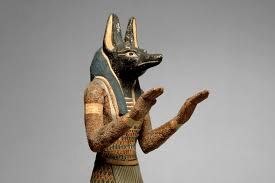
Anubis, God of Death
Inundation
What is the name of the symbol and the meaning?
Ankh
Key of life
Which Pharaoh took power from her step son Thutmose III?
Hatshepsut
Pharaohs in Ancient Egypt were only political leaders and had no religious significance.
TRUE or FALSE
FALSE
Canopic jars
What in Ancient Egypt was black land and red land?
Fertile soil of the Nile > black land
Desert > red land
What is this?
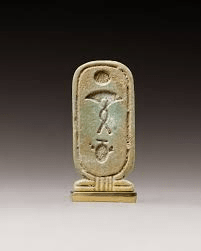
Cartouche
Who was the longest-reigning pharaoh of Ancient Egypt, ruling for over 66 years and leading several military campaigns?
Ramses II
Except for the slaves I’m at the bottom of the heap (along with tomb builders, pig herders and beggars).
What social class is this?
Farmers
Which God was the Pharaoh considered to be on Earth?
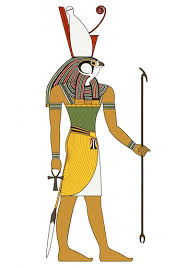
Horus
True of False.
The Nile flows north to south.
False
In what year is it generally believed that the Great Pyramid of Giza was completed?
a) 3100 BCE / BC
b) 2580 BCE / BC
c) 2000 BCE / BC
d) 1350 BCE / BC
Answer: b) 2580 BCE / BC
Which female pharaoh was the last ruler of the Ptolemaic Kingdom of Egypt, famous for her relationships with Julius Caesar and Mark Antony?
Cleopatra VII
I am one of the very few who can read and write. I record the pharaoh’s orders and decisions, and help the vizier keep the tax records. I also keep accounts for the army, write letters for local people and prepare inscriptions for tomb walls and sculptures.
Who am I?
Scribe
What is natron?
What does it do?
Combination of baking powder / salt
Used to preserve bodies during mummification
Name 3-4reasons why Egypt has been called the 'gift of the Nile'?
Transport
Food
Political power
Religion
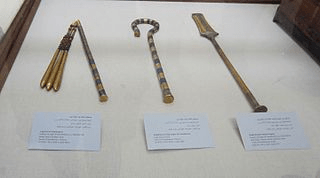
crook and flail
Crook: The crook, or "heqa" in Egyptian, is a curved staff resembling a shepherd’s crook. It symbolized the pharaoh's role as a shepherd or protector of his people, guiding and nurturing them.
Flail: The flail, or "nekhakha" in Egyptian, is a tool resembling a bundle of three reeds or a whip with two flexible thongs. It represented the pharaoh's role in enforcing order and justice, often associated with agricultural fertility and the power to punish.
Who is this Pharaoh? Who was his wife? Who was his son?
Akehenaten (Amenhotep IV).
Nerfertiti
Tutankhamun
What is the name of the artefact that was found in the 1800s that has helped us decipher hieroglyphics?
HINT
___________a (CLUE: flower
S____________ (CLUE: rhymes with gnome)
Rosetta Stone
Describe the weighing of the heart challenge in the journey to the afterlife.
he "Weighing of the Heart" was an Ancient Egyptian afterlife ritual where a deceased person's heart was weighed against the feather of Ma'at, the goddess of truth. If the heart was lighter, the soul was granted entry to the afterlife. If heavier, it was devoured by the creature Ammit, condemning the soul to oblivion.
Approximately how long is the Nile River, making it one of the longest rivers in the world?
a) 2,500 kilometers
b) 3,000 kilometers
c) 4,135 kilometers
d) 6,650 kilometers
Answer: d) 6,650 kilometers
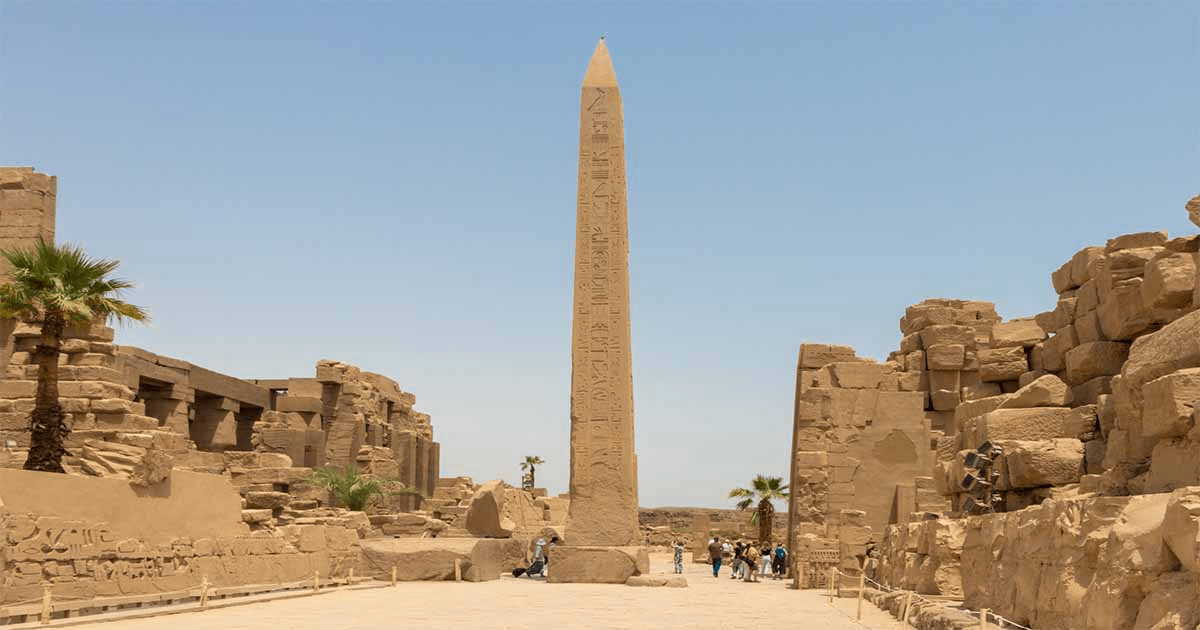
Obelisk
They were associated with the sun god Ra and symbolized a ray of sunlight, representing the connection between the earth and the heavens. The obelisk was also a symbol of power, stability, and enduring legacy. Many obelisks were inscribed with hieroglyphs that praised the pharaohs and commemorated their achievements.